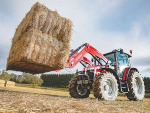The transition period represents an extremely important window in time that spans the 3 weeks prior to calving to the first 4 weeks of lactation. A whopping 80% of disease costs are incurred in the first 4 weeks of lactation! The scale of these costs are largely determined by the management of cows through the transition period.
The importance of this period from a disease prevention perspective is well recognised and has been exploited by farmers for decades, marked by the introduction of magnesium supplementation in the early to mid 80’s.
More recently however, as farmers have focussed on realising the genetic potential of their herd, the goal of transition has broadened further to encompass optimal milk production and reproductive performance.
As a result, the transition period has become a major focus for veterinarians, nutritionists and farm managers alike on a global scale.
There are four recognised key components to modern transition management.
1. Ensuring appropriate adaption of the rumen microbial population and structure
Many cows are now fed fermentable carbohydrate post calving. The introduction of carbohydrates to cows prior to calving allows adaption prior to the cow being under ‘peak stress’. Both changes in rumen microbes as well as changes to the structure of the rumen wall occur as part of the adaption to carbohydrates in the diet.
2. Prevention of macro-mineral deficiency
Post calving there is a two to four-fold increase in the cows’ requiremens for calcium. Major deficiencies leading to metabolic disease can be complex but are commonly associated with either failure to adapt the cow’s metabolism to increase in requirements for minerals, or provide sufficient amounts of minerals.
It is critical to realise that milk fever is considered a ‘gate-way’ disease and cows with subclinical or clinical milk fever are at far greater risk of infectious disease and suffering life threatening injury while they are down (figure 1).
3. Avoidance of excessive mobilisation of fat leading to ketosis
Post calving, the cow mobilises fat reserves to meet her energy requirements. Excessive mobilisation and associated weight loss post calving dramatically increases the risk of the cow to subclinical (SCK) and clinical ketosis (CK).
Both SCK and CK are associated with other detrimental health conditions such as displaced abomasum, metritis, mastitis and reproductive failure.
There are many herds that have significant numbers of cows with both SCK and CK and associated animal health issues within 4 weeks of calving.
4. Optimising the cows immune function
Immune function is also very complex. However, in basic terms the availability and internal regulation of important nutrients and minerals involved in immune function is vital to optimising the cows ability to prevent disease and fight infection once introduced.
Low incidence rates of the common health issues plaguing cows is reliant on the immune system functioning properly.
In summary, if transition is managed properly there are significant and profound benefits to be gained for all farm systems.
The good news is, with proactive planning farmers will achieve some very positive results that will translate to improved animal health, better animal welfare and enhanced profitability.
If you have not done so already, now is the time to discuss transition management with your veterinarian or nutritional advisor.
References:
Lean. I & DeGaris. P (2016), Transition Cow Management. Dairy Australia
Lean IJ (2011). Ketosis. Encyclopedia of dairy science. 2nd ed. Elsevier Science Ltd., Camden, Australia, pp 815-823.
• Greg Jarratt is a vet and director of Matamata Veterinary Services
This article is brought to you by J. Swap Stockfoods.
















